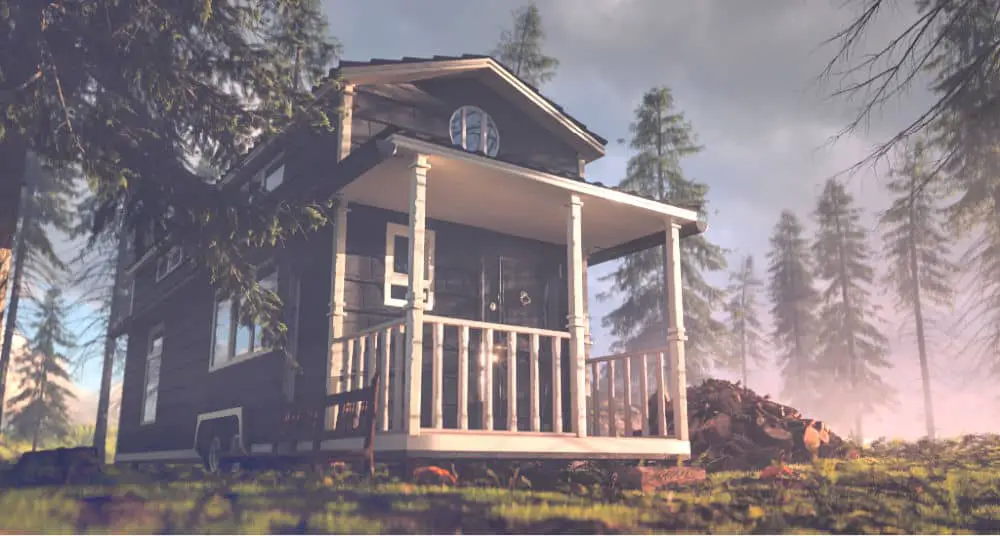Many people have realized the value of having their tiny home certified as an RV. But anyone who wants to go this route must take a series of steps to get certified, which also might have limitations on what type of RV certification you can get for your tiny home.
To certify your tiny home as an RV, you need to have your tiny home inspected to ensure you are up to code, provide detailed records of any work, and bring all records and your bill of sale to the DMV, along with your home’s weight and size.
We’re going to talk about these steps that you need to take to get your tiny home certified as an RV and the benefits of having your home certified. Certification may not be appropriate for all tiny homeowners. By the time you’re done, you’ll know if it’s right for you.
Why Certify Your Tiny Home as an RV
There are many benefits to certifying your tiny home as an RV. In general, most tiny homes on wheels classify as RVs without problems.
An inspector from the DMV will decide if your tiny home is a recreational vehicle or a self-contained travel trailer, a manufactured home, or a recreational trailer.
Having an inspection done of your home is the only way to get certified as an RV. If your tiny home meets the requirements, you’ll receive an RV license.
Financing
There might be times in your life when you’re facing financial difficulties. When you have a traditional home, you can finance your home with a mortgage to recover some financial stability.
But with tiny homes, it’s harder to get financed. If you decide you want to use your tiny home as collateral for a loan, most banks will not approve the transaction unless your home is classified as something other than a tiny house.
Having your home certified as a recreational vehicle can get you lower rates and terms, meaning you can save money.
Insuring Your Tiny Home
Because tiny homes are a new phenomenon, it is still tricky to get them properly insured. How your tiny house is classified will determine the type of insurance you will need to purchase.
If you purchase your tiny home from an RVIA approved manufacturer, it will automatically classify as a certified RV. Therefore, you will have no problem insuring your home with RV insurance.
But if your home is not RVIA certified and cannot be, you’ll need to look for other insurance options. You could start by looking for insurance companies that provide insurance for alternative living structures.
There are times when you can use a typical home insurance policy or a tiny home policy to cover your small home. However, you will face limitations on what the insurance will cover.
And there also might be limitations for using your tiny home for travel. Some policies will not cover damage acquired during transit.
You might also be able to get your tiny house covered with manufactured home insurance. This route works if you have a DIY THOW (tiny house on wheels) that can’t get certified as an RV.
Setting Up a Permanent Residence
One challenge many tiny house owners face is where they can set up their home. If you don’t own property or you want to do some traveling with your THOW, you may be considering RV parks.
But many RV parks have restrictions regarding the use of tiny homes. It’s becoming common practice to see many parks denying access to tiny houses that do not have a recreational vehicle license.
However, there are plenty of campgrounds that are tiny house friendly. You can look up parks around the country using My Tiny House Parking or search for tiny house groups or parks on Facebook.
Cons of Having a Tiny House Registered as an RV
There are a few problems regarding having your tiny house registered as a recreational vehicle. Recreational vehicles are typically not allowed to be used for permanent residence, and more for travel.
States vary on the laws regarding how long you can live in a travel dwelling like a recreational vehicle. It can go anywhere from one to two weeks up to 30 straight days. But most locations rarely enforce these rules unless a complaint is filed.
Steps to Take for Certification
There are a few steps you will need to take to certify your home as a recreational vehicle. It is always easier to get approved if you purchase your home through a certified RVIA builder.
But plenty of people want to build their own tiny DIY style tiny homes. Keeping detailed records throughout your build can help when it comes time to have your home inspected for certification.
Get Accurate Measurements
Before you can get your tiny house registered as an RV, you must know the dimensions of your home. You’ll need to measure your tiny house for length, width, and height.
You’ll also need to schedule having your home weighed, as the exact weight is a requirement for licensing.
If you’re buying your home from a manufacturer, they should be able to provide you with these dimensions and weight specifications without you having to do it.
Schedule an Inspection
Regardless of if you buy your tiny home through a dealer or build your own, it has to be inspected by a licensed investigator to qualify as a recreational vehicle.
You may have to pay a fee to have the inspection done. The inspector will check to see if your tiny home meets the RVIA NFPA 1192 Standards, ensuring your home is up to code and safe to habitat.
There’s a considerable checklist, so if you’re building your own home, you’ll want to keep the list handy and ensure you’re meeting all the requirements. And it’s best to take photos of every step and keep detailed records of all the work you’ve done.
If you have your home inspected throughout the building process, it saves time when you’re ready to be certified. However, it can get expensive if you have to pay for each inspection.
With a house bought by a manufacturer, some homes will not require as much inspection because you will have paperwork that shows that your house meets the required standards.
Visit the DMV
Once your home has passed inspection, and you have the specifications of the size, you can visit your local DMV (Department of Motor Vehicles) and apply for an RV license. The process will differ depending on if your home is DIY or manufactured by a company.
DIY Tiny Home Registration
For DIY builds, bring along all documentation that goes with your tiny home, including any receipts, photos, work orders, and plans.
You usually also need the VIN (Vehicle Identification Number) of your trailer. And in some cases, you might also need the manufacturer’s statement of origin or MSO.
You will also need to know the dimensions of your tiny home, including height, length, width, and weight. It might also help to have the information about your trailer if your tiny house has wheels.
Tiny Home Bought From a Manufacturer
To register a home built by a professional, the process for registration is more straightforward. Some manufacturers do all the work for you, so there’s nothing you need to do.
But if it’s on you to get your certification, head up to the DMV with your bill of sale, VIN of the tiny home (all tiny homes built by a company have one), and any build receipts, which you can get from your contractor.
You will also need the specifications of your tiny home, including size and weight. If the company you purchased your house has not given you the weight, you may have to pay to have it towed to a weigh station.
Certifications
Having your tiny house certified as an RV is best done by the RVIA, which requires your home to be built by specific manufacturers. The Recreational Vehicle Industry Association has particular guidelines they expect a company to follow to make your house pass building code.
If it is impossible for your house to be RVIA certified, you still have options for certification. Pacific West Associates can classify your tiny house as a traditional RV based on NFPA 1192 or ANSI 119.5 guidelines.
You could also try getting certification through the National Organization of Alternative Housing (NOAH). This company can inspect your home to be sure it meets tiny house standards. Then give you the certification you need to register as an RV.
In Closing
Tiny homes have many advantages over traditional homes. However, it is a new trend, so there are still some challenges with issues like getting your tiny home certified as a recreational vehicle.
But we’ve demonstrated all the benefits of having your tiny house classified as an RV, including being easier to insure or finance, and having more options for where you can park your home when you’re traveling.
Having your tiny home certified as a recreational vehicle can increase the resale value, so you stand to make a profit if you ever decide to sell. We’ve given you everything you need to know about certifying your tiny house as an RV. Happy tiny living!

